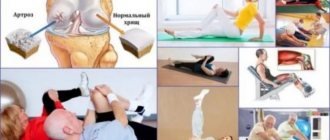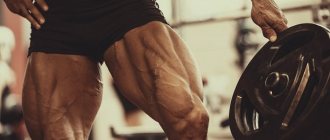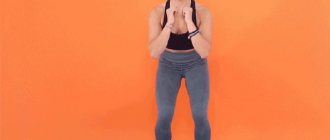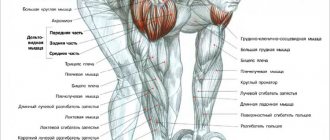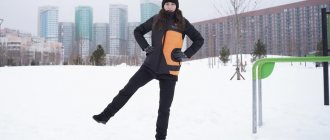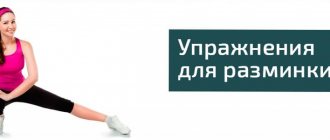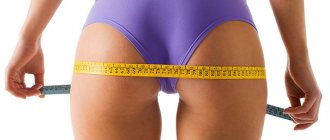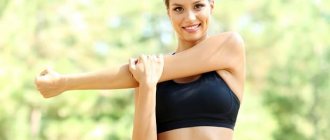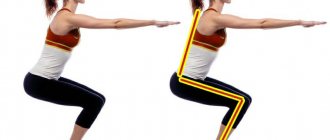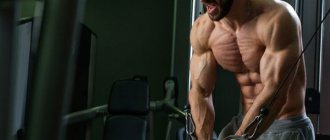In a modern environment with reduced physical activity of the population, knees often begin to hurt when unexpected stress occurs. To prevent knee joint diseases and eliminate pain, we will consider several effective techniques.
The following exercises are indicated when it is necessary to relieve the symptoms of arthrosis. Gymnastics contains a set of exercises for joints that restore and strengthen the knees and relieve pain in the knee joint.
Let's consider 4 methods:
- A set of exercises from Sergei Bubnovsky
- A series of video lessons from Master Go - Living Knees
- Restoration of knee joints from Vladislav Efimov
- 12 exercises to prevent arthrosis and strengthen knees
What are the risks of a knee injury?
Typically, athletes who have damaged the meniscus or ligaments come to the traumatologist with knee pain. The remaining part turns to a specialist after complex fractures. Sometimes a fracture cannot simply be cast, especially in the knee. A regular cast can permanently immobilize a leg.
To avoid this, surgeons correctly assemble the broken bone, insert special prostheses and pins so that everything heals correctly and quickly.
After the cast is removed, the leg loses mobility. Especially after a knee fracture, it is not possible to move the leg - it hurts. The ligaments have lost their elasticity and flexibility. And a person cannot bend his leg even 90 degrees. This is where a set of therapeutic exercises comes to the rescue, which will strengthen the muscles and ligaments of the recovering leg.
If repair procedures are neglected, a knee injury can lead to complete immobility of the legs and, in severe cases, to a wheelchair. This justifies the need for rehabilitation measures.
All exercises for joints can be performed at home by laying down a fitness mat. Make sure there are no drafts in the room. The knees should not be exposed to even short-term hypothermia.
Master Go - Living Knees
A wonderful exercise from Master Go has given millions of people hope for restoring their knees and relieving pain. We invite you to familiarize yourself with the series of 4 videos.
The first film "Living Knees" on the method of natural healing of legs and knees shows simple general exercises. This is the basis of the knee healing method. Knee exercises can be done either independently or in a group.
When performed regularly every day, spending no more than five minutes a day, these exercises relieve pain in the knee joints without medication for all categories of performers.
An additional advantage of this method of knee restoration is that the person who has completed the exercises begins to perceive himself as the creator of his own health. He begins to understand that he got rid of the pain in his knee himself, through his own work. A large percentage of rehabilitated people become active practitioners of the Living Knees method.
The first level is indicated for older people because it not only relieves knee pain when walking and resting, but also supports the desire to share their achievements with others and helps them become socially active.
The second film in the series “Living Knees” on the method of natural healing of legs and knees “Wonderful Exercise” shows and explains in detail an EXERCISE for the LEGS, which is so effective that, as experience has shown, this one exercise can restore normal function of the legs - from the ankle to the hip .
The third film in the “Living Knees” series based on the method of natural healing of legs and knees “Restorative Walking” shows and explains in detail the principles of correct gait and therapeutic walking.
Proper walking can not only restore normal leg function - from the ankle to the thigh, but also become an elixir of longevity, extending a person’s active life by 10-15 years. This is the second stage of the knee healing method. Exercises (steps) of therapeutic and restorative walking can be done both independently and in a group.
Principles of healing knees from Master Go
Basic techniques in 6 theses:
- A diagnosis is like a death sentence. But even the verdict can be appealed.
- It is not exercise that heals a joint. The joint heals the body.
- Exercise starts the body's recovery program.
- The body does not care about the diagnosis. If the recovery program starts, everything will be cured.
- It will be difficult for the body to heal us even through its recovery programs if we continue to injure our feet.
- To stop hurting our legs, we need to figure out how we walk and sit, and change it all.
In addition to exercises from Master Go and therapeutic exercises for knees using specialist methods, there are also a number of simple exercises for knees that you can easily perform at home.
Exercises and technique
Like we said, you can do everything at home. We recommend purchasing a regular children's ball, as well as a fitball. If you have financial problems, a children's ball with a diameter of 15–20 cm, which can be bought at any children's store, will be enough. The ball should be light and have medium hardness (let's tell you a secret, you will use it during some exercises). This will be enough to restore the physical characteristics of the legs.
Rehabilitation is a multifaceted and complex process. Just like the knee joint itself.
Some elements included in the complex help strengthen all leg muscles, while others develop the joint in isolation. We will divide exercises into those that restore muscle tone and those that increase the mobility of the joint itself. You can’t do just one thing, because movement is ensured by the combined qualities of the knee joint, ligaments and muscles of the leg.
Let us note that if you have not had any injuries, but your knees have started to creak, or you are experiencing pain in them, then you should pay special attention to warming up before training or in the morning, after waking up. Let's start with her.
Bubnovsky - exercises for knee pain
Pros of knee joint gymnastics:
- Pain syndrome decreases.
- The joint space widens.
- Blood supply improves.
- The muscular system is strengthened.
- Problems with the spine are corrected.
When doing gymnastics, follow some conditions to avoid the possibility of knee injury:
- Alternate intense physical activity with breaks. Cartilage tissue regenerates better by eating the knee at rest every six hours.
- You will achieve results if you do not put too much stress on your knee. It is advisable to divide the exercises into ten-minute stages.
- Perform therapeutic exercises slowly, gradually increasing the range of movements.
- For arthrosis, gymnastics is indicated three times a day, perform 6 repetitions.
- Don’t be afraid to feel pain during gymnastics; you need to move your knee until mild pain appears. After gymnastics, be sure to take a break.
Gymnastics for the knees dramatically reduces all risks of complications and helps improve movements.
Morning exercises for knees
Below is a set of exercises to restore knee joint mobility after injury and prevent age-related changes.
Stage 1
- As soon as you wake up, lift one leg slightly up, bend it at the knee so that it is not difficult to hold it in the air. Bend your leg to the smallest possible angle and straighten it. We pull the toe towards ourselves so that the calf muscle tenses. Do this exercise for each leg 10 times.
- Now, from the same position, try to draw a circle with your toe. Try to keep the circle correct. Carefully follow with your eyes what your foot is drawing. In this case, mobility should only be in the knee. We don't touch the ankle. We pull the toe forward, as if there is an invisible sheet of paper in front of you, and you draw on it with your big toe. Draw 5 circles clockwise and 5 counterclockwise. Repeat the same for the second leg.
So now you are ready to get up. Let's move on to the next part.
Stage 2
We stand near the bed, feet shoulder-width apart. We place our right foot on the toe, transferring the center of gravity to the other leg. We tear the sock off the floor so that it hangs freely in the air. We perform flexion and extension of the leg at the knee. Bend as much as possible, touching the heel of the buttocks or the back of the thigh. We straighten it to the normal state so as not to injure the kneecap. For each leg, repeat the exercise 10 times (movement back and forth counts as one time). If it is difficult to do the exercise while standing, you can sit on a chair or the edge of the bed.
Next, lower your foot to the floor. Feet together, tilt the body and grab the front knees with both hands, resting your palms on them. Now your task is to draw a circle with the knee joint using your hands. We draw 10 circles in one direction and 10 back.
And the third exercise is to draw a circle with your toe on the floor. To do this, you need to slightly raise your leg so that the sock (and it stretches down) hangs freely above the floor. We draw 5 circles clockwise and 5 counterclockwise. We do the same for the other leg.
The above complex is a measure to prevent age-related limitation of knee mobility.
For example, salt (insoluble) may be deposited in the joint or there may not be enough joint fluid. And over time, ligaments become denser and lose elasticity, just like tendons. Therefore, such a morning warm-up will allow you to keep your knees in normal condition.
You can use these same exercises to restore mobility.
We said that it is impossible to pump up the leg muscles with such exercises in the usual sense. But for those who have been immobile for a long time, the word “pump up” is most suitable, along with the word “strengthen”. Now let's look at a set of exercises to strengthen the muscles and ligaments of the knee joint.
Single leg squats
Single-leg squats, according to Kat Ellis, are an effective way to eliminate strength asymmetries between the right and left sides of the body.
Technique:
- Place a chair behind you and stand on one leg, trying to maintain balance.
- Move your pelvis back, bending your knees, and sit on a chair.
- Continue to sit down and return to the starting position with your supporting leg without lowering your other leg to the floor.
Do 3-4 sets of 8-12 reps for each leg.
Therapeutic complex for restoring and strengthening knees
The complex contains exercises related to the rehabilitation program after arthrosis and knee injuries, and helps strengthen them.
Lay out a rug and lie down on it with your back:
- We stretch our arms up behind our heads, palms facing the ceiling, toes pointing in the opposite direction. As you inhale, pull your socks towards you and begin to alternately stretch each heel down (parallel to the floor). At this time, the pelvis moves a little - this is normal. As you exhale, lower your socks down again. Don't hold your breath, just remember when to inhale and when to exhale.
- We lower our arms down parallel to the body. Raise your right leg and stretch your toes up. As you inhale, pull it towards you, as you exhale, away from you. We do this 5 times for each leg, feeling the stretch in the knee.
- From the same position, we begin to do a “bicycle” - 10 rotational movements with each leg in turn.
- Then the “bicycle” is done with both legs at once - 20 circles. Don't forget to pull the sock away from you.
- Now lower your legs, bend your knees 100 degrees (more than a right angle), spread your knees to the sides. Feet together. This exercise is called the “butterfly”. We spread our knees and bring them together - we do this 10 times.
- From a lying position, pull your knee with both hands towards your stomach. We press it and stretch our face to the knee. We do 5 stretching movements in this way.
- Then we clasp both knees with our hands and do the same.
- Bend your legs at an acute angle, feet shoulder-width apart. We place our right leg with our foot on our left knee and turn the knee of our right leg to the side and back. We do 5-10 stretching movements. Then we do the same for the second leg.
- Now it’s more difficult: when one leg is on the knee of the other, with the force of the latter, lift both legs, touching the first knee to the chest.
- With your feet shoulder-width apart, lower your right knee inward (to the left), touching it to the floor. Repeat 10 times for each leg.
- Now we need a ball (or roller). We sit on a chair and place the ball under our foot. We roll it forward and backward, left and right due to the movement of the knee joint. Make 10 movements with each leg in all 4 directions.
- We sit on the floor and do a butterfly from a sitting position. We don’t help with our hands; they are located between the legs and hold the feet.
The listed exercises for the knees can be done either one by one for each leg, or as a bunch, doing 3-4 exercises for each leg in a row.
Stepping onto the platform
You can also use a regular, stable chair to perform the exercise. “Platform steps” are a very effective exercise that simultaneously strengthens both the knees and thigh muscles.
Technique:
- Stand facing a chair and place one foot on it.
- Shifting your weight to the heel of your foot placed on the chair, rise up - your thigh is parallel to the floor, your foot rests completely on the chair, your back is straight.
- As you exhale, lower yourself down.
Do 3 sets of 10-12 repetitions on each leg.
Recommendations
Finally, some recommendations:
- Exercises for arthrosis of the knee joint are the same.
- We noted that this is a rehabilitation complex. Naturally, it involves not only the knees, but also all the muscles of the legs. Therefore, in addition to the above exercises, there are also different options for lowering and spreading the legs, scissors, etc. They do not touch the knee joint, so we deliberately omitted them.
- Instead of a ball, you can use a roller and roll it not on a chair, but while lying down.
- Joint exercises are not necessary. They are only needed if you have problems with your knees. When you feel that your knees are starting to give you trouble, it’s time to remember this complex.
The concept of “pumping up” implies a heavy load. This is out of the question here. You can pump up your legs when the problems with your knees go away - so try if you already have these problems.
How to understand how well the knee joint is working
If you want to understand where you are now and how well your knee joints are working, then do a simple musculoskeletal assessment, testing the muscles, tendons and ligaments of the knee joint.
To do this, just perform a simple test: take off your shoes and socks, now stand on one leg and see what happens. If you feel uncomfortable and have to swing your arms to keep your balance, it means the muscles around your knee joint are unable to respond to changing conditions in time.
And this is direct evidence of their weakness, which may well lead to knee injuries while running, playing football, jumping and sudden changes in direction of movement when walking quickly.
The best thing you can do now is to start training your knee muscles. Strong muscles will better hold the joint in place, will not allow it to move even during heavy loads, and will serve as excellent support for the knee tendons.
What rules to follow
- When performing gymnastics for arthrosis, all movements should be smooth and energetic.
- Before starting training, it is better to consult with a rehabilitation specialist or exercise therapy doctor. Ideally, attend several group classes, and only then move on to home workouts.
- The recommended training schedule is 6-7 times a day for 3-5 minutes.
- The number of repetitions of each exercise is 5 times.
- Never exercise if there is pain. If, after completing the movement, pain makes itself felt even after 15-20 minutes, reduce the number of movements to 5, and then gradually increase to 15, avoiding pain.
Exercises for the knee will only be beneficial if they are not performed through pain.
Starting exercises
Great exercises for those just starting out or recovering from injuries or surgeries. It is very important to teach the muscles to move in the right direction. After all, they pull on the structures of the knee joint, such as the patella. The patella moves along the patellofemoral groove. If the muscles do not work properly, the kneecap becomes displaced, the friction of the articular surfaces increases, and the cartilaginous covering is damaged. After some time, symptoms appear: pain, swelling and others.
The exercises are performed lying down and sitting. Always track your movements: your leg should move up and down, without deviating to the sides.
We strain the quadriceps muscles while lying down
Goal: maintaining and increasing the strength of the quadriceps IP: lying on your back; The leg and knee are straight, do not turn the foot in or out. Place a cushion under your knee (preferably a rolled up towel). Action: pull the toe of the leg toward you (the back muscles of the leg are stretched), strain the muscles of the front of the thigh (the knee seems to “go” down). Carefully press the back of the knee against the bolster and, as it were, crush it. Fixation for 3 seconds - slowly lower - relaxation.
Extending the leg while lying down using a roller
Goal: Maintain and increase the strength of the quadriceps, ensure full straightening of the knee joint. Helps improve movement control. IP: lying on your back; The leg and knee are straight, do not turn the foot in or out. Place a cushion under your knee (preferably a soft, small fitness ball). Action: pull the toe of the leg toward you (the back muscles of the leg are stretched), strain the muscles of the front of the thigh (the knee seems to “go” down). Without lifting the knee from the bolster, we raise the shin until the knee joint is fully straightened. Fixation for 3 seconds - slowly lower - relaxation. Options for Progression: Using athletic leg weights on ankles.
Raise your leg while lying down
Goal: Maintain and increase quadriceps strength. Attention! Not recommended for back problems. IP: lying on your back, leg and knee of the target leg straight, toes pointing up, do not turn the foot in or out. The second leg can be bent at the knee joint. Action: we lift a straight, outstretched leg above the surface (the angle of elevation is up to 25°; the smaller the distance above the surface, the more difficult it is to do the exercise and the more effective it is), the leg muscles are tense as much as possible, and we try to relax the muscles of the rest of the body. Fixation for 3-5 seconds - slowly lower - relaxation. Options for Progression: Using athletic leg weights on ankles.
Raising a straight leg while sitting
Goal: strengthen the quadriceps, increase the mobility of the knee joint. Can be performed at any time during prolonged sitting to prevent the joint from becoming stiff. IP: sitting on a chair (if possible, in front of a large mirror). We follow the “90o rule”. The back is straight, pressed tightly against the back of the chair; the head stretches upward like a “light balloon”; The thighs, legs and feet are parallel to each other. Don't visually track your movements, look straight ahead. Action: raise the leg, straighten the knee as much as possible. Fixation for 3-5 seconds - slowly bend it back, lower it to the floor - relaxation. If possible, all actions are performed in one smooth movement. Options for Progression: Using athletic leg weights on ankles.
